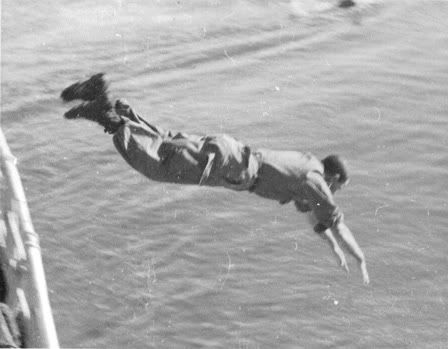
I’d really like to say, “This is a subject that requires no introduction.” It’d be a funny way to open up the subject of exposition, since a lot of stories start out with something expository. Especially in genre fiction, more often than not, the world or worlds in which the tale is set will be completely alien to the audience. While this isn’t always the case, it happens often enough that the ins and outs of good exposition are worth talking about.
There’s a method of storytelling out there called in medias res. It’s fancy Latin jargon for “diving right into the good stuff in the story.” Stories that begin this way spend little to no time on exposition. Sometimes this can be pulled off even in genre fiction. Take a look at the opening of the original Star Wars. We get a little text crawl that sets the scene a bit, telling us who the Empire & Rebellion are but not a great deal else, and then WHAMMO. The space equivelant of a beat-up cargo van is getting chased by the mighty, imposing, ball-shrinkingly intimidating hugeness of an Imperial Star Destroyer. The shot and scene are composed in such a way that, without saying another word beyond that opening text, we know just about everything we need to know about who these folks are and what they’re about.
This is an example of good exposition. As Chuck said over on Terribleminds, “[E]xposition is sometimes necessary, but it should never be a boat anchor.” Going on expository tangents is a surefire way to have people losing interest in your story. If you’re lucky, they’ll turn a few pages ahead to look for something exciting to happen, or hit the fast-forward button if it’s in a medium other than print. The classic writers of genre fiction, Tolkein and Lewis for example, could get away with long expository passages because that was the style of the day. However, even as a fan of their work, sometimes I just can’t stand reading another of JRR’s long descriptions of how Tom Bombadil’s hat looks.
Some of the best exposition out there is woven into other things that are going on. Sometimes the best way to do this is to have one character talk to another about something they don’t already know. For example you could have an human explain to an alien some odd human custom that’s become common in whatever year 20XX you’ve set your story. Then, the alien replies that the custom is strange to them because of how things are done on their homeworld. In a few lines of dialog, you’ve not only established a way in which the world has changed, but also how different the aliens are from us.
“Brevity is the soul of wit,” or so we’re told. Or, as Mr. Plinkett puts it, “Don’t waste my time.” If you can find a way to get exposition out there that doesn’t feel like a chore to write, you can tell your audience more about the story without tempting them to reach for their smart phones or what have you. Because if it’s dry and boring to write, you can bet your ass it’ll be dry and boring to read.
Share some thoughts on exposition. What sort of expository passages or scenes stand out in your mind as good or bad examples? How do you get around the difficulty of creating stories in a new world? Help others help you help us all.
Or something like that.



April 13, 2010 at 2:45 pm
Ungh exposition. It’s a big weakness of mine, and why the first book of my 5-book series that I’ve been trying to get written for (gulp) 10 years now is on its umpteenth first draft.
It can be so hard to get around, especially if you’re writing a completely different world, because you want to lay it out for your reader so they can understand this strange new world.
But, of all my favorite authors, I think David Eddings handled exposition best. He says in the introduction to his book The Rivan Codex (companion to the Belgariad and Mallorean series) that he likes writing the “young, dumb hero”. Even if the hero isn’t technically young or dumb (e.g. Sparhawk of his Elenium trilogy) then they are at least ignorant of the forces they are dealing with.
This allows for exposition through dialogue explanation, which is far more palatable to the reader than long paragraphs of description.